The Encyclopedia of Trading Strategies
$22.10
| Author(s) | , |
|---|---|
| Format |
|
| Pages |
386 |
| Publication Year |
2001 |
The Encyclopedia of Trading Strategies is for traders who want to take the next step to consistently profitable trading. The authors themselves seasoned veterans of the futures trading arena pinpoint the trading methods and strategies that have been shown to produce market-beating returns. Their rigorous and systematic backtesting of each method, using the same sets of markets and analytic techniques, provides a scientific, system-based approach to system development to help you assemble the trading system that will put you on the road to becoming a more consistently profitable trader.
Introduction:
In this book is the knowledge needed to become a more successful trader of commodities. As a comprehensive reference and system developer’s guide, the book explains many popular techniques and puts them to the test, and explores innovative ways to take profits out of the market and to gain an extra edge. As well, the book provides better methods for controlling risk, and gives insight into which methods perform poorly and could devastate capital.
Even the basics are covered: information on how to acquire and screen data, how to properly backtest systems using trading simulators, how to safely perform optimization, how to estimate and compensate for curve-fitting, and even how to assess the results using inferential statistics. This book demonstrates why the surest way to success in trading is through use of a good, mechanized trading system.
For all but a few traders, system trading yields mme profitable results than discretionary trading. Discretionary trading involves subjective decisions that frequently become emotional and lead to losses. Affect, uncertainty, greed, and fear easily displace reason and knowledge as the driving forces behind the trades. Moreover, it is hard to test and verify a discretionary trading model. System based trading, in contrast, is objective. Emotions are out of the picture.
Through programmed logic and assumptions, mechanized systems express the trader’s reason and knowledge. Best of all, such systems are easily tested: Bad systems can be rejected or modified, and good ones can be improved. This book contains solid information that can be of great help when designing, building, and testing a profitable mechanical trading system. While the emphasis is on an in-depth, critical analysis of the various factors purported to contribute to winning systems, the essential elements of a complete, mechanical trading system are also dissected and explained.
To be complete, all mechanical trading systems must have an entry method and an exit method. The entry method must detect opportunities to enter the market at points that are likely to yield trades with a good risk-to-reward ratio. The exit method must protect against excessive loss of capital when a trade goes wrong or when the market turns, as well as effectively capture profits when the market moves favorably.
A considerable amount of space is devoted to the systematic backtesting and evaluation of exit systems, methods, and strategies. Even the trader who already has a trading strategy or system that provides acceptable exits is likely to discover something that can be used to improve the system, increase profits, and reduce risk exposure.
Contents:
- Data
- Simulators
- Optimizers and Optimization
- Statistics
- Breakout Models
- Moving Average Models
- Oscillator-Based Entries
- Seasonality
- Lunar and Solar Rhythms
- Cycle-Based Entries
- Neural Networks
- Genetic Algorithms
- The Standard Exit Strategy
- Improvements on the Standard Exit
- Adding Artificial Intelligence to Exits
The Encyclopedia of Trading Strategies By Jeffrey Katz, Donna McCormick pdf
24 reviews for The Encyclopedia of Trading Strategies
Clear filtersOnly logged in customers who have purchased this product may leave a review.

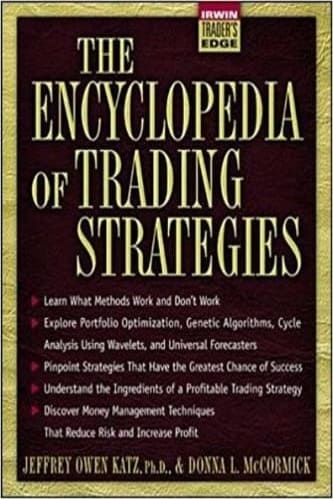

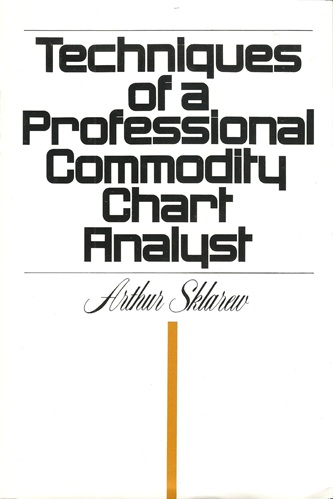
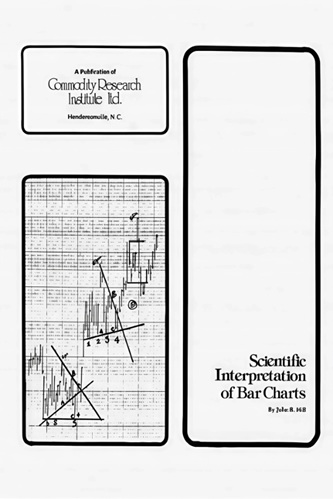
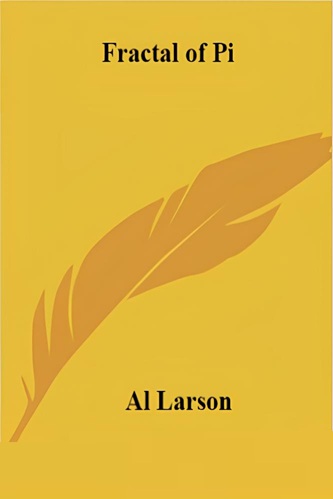
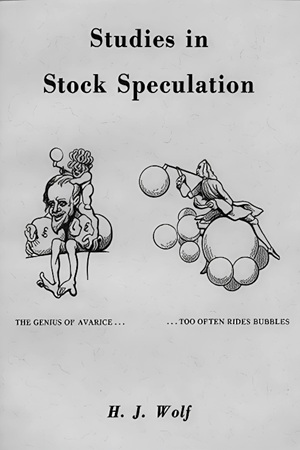

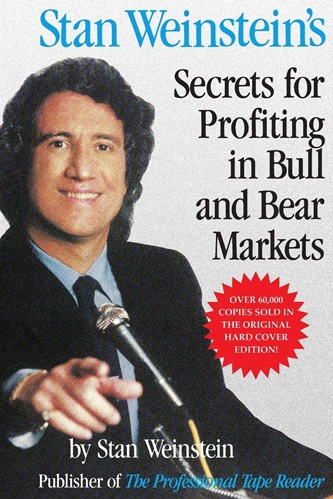
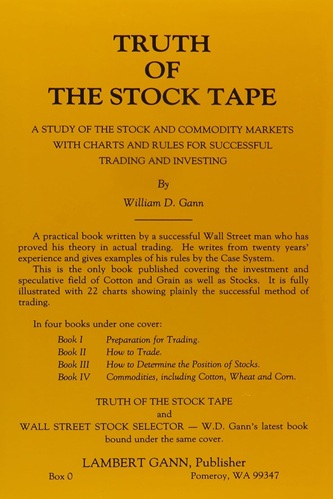
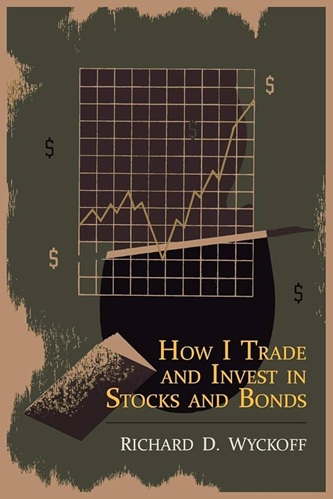
Nataly Mack (verified owner) –
Katz and McCormick continue to add to their already impressive contributions in the field of Trading Strategies with this exhaustive piece of work. It presents an entire foundation on the subject that will be keenly absorbed by both neophyte and aficionado alike. Their findings are are most enlightening and will help any “systems trader” focus or refocus their research. Doesn’t require a Ph.D. in Mathematics (ala Kauffman) and their use of C++ overcomes the significant limitations of other authors almost slavish devotion to Tradestation. The single most important book on this subject that I have read. Buy it!
Sasha Patterson (verified owner) –
I would have saved countless hours if I had a book like this when I started developing trading systems with Omega Research TradeStation. It covers the basics: like you can’t assume all stock data is good data. Then progresses into advanced and very advanced topics not found anywhere else besides inside the big institutions. It also goes into great detail on evaluating the performance of your simulations. A great read for the novice and the advanced trader.
Mina Spence (verified owner) –
This is the best trading book I have ever read, number one in my trading library. This book not only tells why most trading systems fail, but also shows the best way how to develop winning trading systems. Its honest handling of the truth, its methodical, scientific approach to solving the traders’ dream makes this book the king of all.
Ophelia Cannon (verified owner) –
This is by far the most complete and advanced work I’ve read on the subject. However, read Robert Pardo’s “Design, Testing, and Optimization of Trading Systems” first if you are new to backtesting.
Nicolas Middleton (verified owner) –
I was new to the topic of automated trading systems when I purchased this book. If it is your case, I can tell you that this is the place you want to start. why? Because it will teach you the truth about system development and give you a scientific perspective on the topic. No promises, no blabla you will be rich in 2 weeks. You will realize that there is a lot of work to do to get there, and the book will help you enter this great subject with smooth.
In short: no promises, only scientific realities on how to take out profits from the markets.
Juliet Felix (verified owner) –
This book is one of the best trading books ever published. It provides a very systematic and scientific approach of evaluating entry and exit techniques across a diversified futures portfolio. It presents by far the most rigorous and sound methodology of evaluating trading system robustness. The section on the use of statistical analysis to evaluate model validity is easily worth the price of the book.
The authors did an excellent job defining the correct way of optimizing system parameters. The part on exit techniques is also impressive. It contains a methodology on the development of exit strategies and presents many exit techniques.
Overall, the book is packed with a wealth of information. Every time I re-read a chapter I find a new gem. I strongly recommend this book to all mechanical system traders, especially those trading diversified commodity portfolios.
Kate Conley (verified owner) –
Wow! For the research oriented person, this book is great! Not only does it go over large variety of different approaches to the commodities market, but the authors let you know the pitfalls and traps to various methods of evaluating the markets.
The book is written in a concise manner that allows quick naviagation and further study of any desired topics. The authors have documented their sources well and really covered a lot of ground! A *must* read for traders! *
Layton Stanton (verified owner) –
This book is a review of trading strategies tested by the authors. Those strategies range from simple moving average crossing to neural networks- and genetic algorithms- based. The approach is simple – try all possible strategies and see how do they work. In this, the book under review is different from other books I’ve read – it cuts the discussion to the minimum and goes straight to the facts. I beleive that anybody who thinks of a building a automated trading system should read this book first. It may save him a valuable time of backtasting all the strategies and allow to concentrate on the most promising ones. Having said this, I took away one star because the C code snippets given in the book use some proprietary libraries and are mostly useless. In some parts, the authors skip the valuable details that will make you ask “why” a number of times as you read on.
Zayn Atkins (verified owner) –
Most books on trading assume either that the reader never got to college, or else that they never left. This one, however, is different, rapidly bringing the technical but non-specialist reader up to speed in the principled construction of automated trading engines.
If you have a reasonably numerate background, perhaps with some software development experience, and have found yourself drawn to the concept of constructing your own mechanical trading system, you owe it to yourself to read this text. Quite simply, it is superb. The authors begin by describing the core components of a sound system, including the application of statistical inference and the selection of appropriate sample sets for back-testing. They then go on to provide a set of normalised comparisons of various trading ‘rules’ for entry and exit (e.g., breakouts, MAVs, oscillators, neural net predictors, etc.) together with discussion of optimisation systems (such as simulated annealing and genetic refinement). The actual results of some ‘respectable’ rulesets you may find rather shocking! And if you are only dimly aware of what genetic algorithms can offer the modern trader, you should buy this book for that reason alone.
The style of the text is clear and unstuffy, with chapters of readable length and well-structured content. The reader who wants to learn more will find this book an ideal jumping off point, since many references to the literature are provided, but an excessive technical background is not assumed, and the work is for the most part self-contained.
The only minor issues are 1) the title is a somewhat misleading; you will not find an A-Z list of trading strategies here, but rather a more select discussion of the techniques (and the validity of certain *classes* of strategy) involved in building viable automated trading systems; and 2) there is some ugleeee typesetting of mathematical formulae in Fortran (!). However, neither points really count for more than nitpicking in contrast to the value of the text overall.
In summary, there is real content here – described and justified, if you are an engineer like me, through the sort of scientific analysis and rigour that creates more excitement than a million words of hype. Fed up with TradeStation? Writing your own system in C++? In need of a bit of inspiration and guidance? If this sounds familiar, you want this book, believe me.
IMHO, it’s a classic. Buy it.
Rodney Jarvis (verified owner) –
This book needs a complete overhaul.
Markets have changed, tactics have changed and the whole internet and technology boom has had a tremendous effect on markets. There are other books on trading strategy that are more current, and ones that focus on specific markets…such as stocks or currencies. You would be better off with something updated. Generally, from a ‘big picture’ point of view the book still holds up…but you can find general big picture info at the numerous websites offering free education and lessons.
A new, up to date, well tested and proven version of this is needed.
Kenneth Chang (verified owner) –
As a software engineer I needed a book that will teach me some trading strategies that I can program and bought this book hoping to find a list/ideas of trading strategies, as you expect from Encyclopedia. Unfortunately this is the most not practical book I have ever read, if you think you’ll be able to trade after reading this book you’re wrong!
It has academic theoretical discussions about trading systems by testing the most simple and basic setups just to tell you that they don’t work if you trade them automatically (crossing MAs, breakouts etc). I’m sorry but you don’t need to have Phd to know that, they don’t even try to come up with a strategy that work!
Who can benefit from this book? If you are in your Master/Phd studies and looking for theoretical trading academic book, no doubt this is for you, all the rest try something else…
Jaycee McIntyre (verified owner) –
I bought this book because I thought it would contain an overview of various trading systems, fundamental/technical/… but apparently I was wrong. This book contains a serie of technical trading systems that are backtested.
If your looking for a book on how to evaluate backtest results, certainly go for this one. I found the statistical validity checks very helpful and easy to apply in excel and use them everytime I evaluate a backtest.
The rest of the book was also interesting to read, but not that helpful to me. In my own trading, just 10% to 15% happens mechanically. This book would have been a better help if my knowledge of programming/developing technical trading systems was higher. Also the parts on neural networks or generic algorithms were completely new to me.
All in all, go for this if you like programming/backtesting/evaluating trading results. Don’t go for it if you’re just looking for a book on simple trading systems that are not completely mechanical.
Eliseo Booker (verified owner) –
Little more than a list of names. Did not provide a clear understanding of individual strategies. Not useful.
Reece Liu (verified owner) –
A lot of nonsense code. If you really wanna learn something about trading strategies, read John Murphy “Technical Analysis of the Financial Markets: A Comprehensive Guide to Trading Methods and Applications” or Chuck Le Beau “Technical Traders Guide to Computer Analysis of the Futures Markets”.
Amir Klein (verified owner) –
covers a lot of material and mechanisms of traading with analytic views from mechanical trading
Marvin Sharp (verified owner) –
I liked this book.
it presented many ideas and a right pragmatic approach to test a trading system.
I found tough the statistics part, but it’s not an author’s fault: it’s statistics.
in the final part I found many repetition (many pages might be saved just writing: ” hey, for this system we apply the same said at pag. xyz..”).
Only two things remained a mistery to me (but I’m not much intellingent..): why didn’t the author make any test for longer horizons? in the end, the strategies never approached a longer term trading strategy: usually the trades last few days.
maybe it’s not worth? the author doesn’t tell us
ah, and it’s not an encyclopedia: why did he choose this name?
this is the second mistery…
Madalyn Wheeler (verified owner) –
As a Quant I tested many systems on stock indexes using the daily close and I now moving to Intraday models on the forex markets using Meta trader 4.
I appreciate this book because it saved me a lot of research especially what does not work (Moving averages models..)
I am trading a breakout model now on NZD and improved already my actual results changing my entry orders from market price to some limit price.
If you are like me – a deep researcher buy it. It shall help you save time and open your mind to very practical ideas.
Two points bothered me:
One is use the TrueRange (meaning votality) as a stop take profit parameter. I prefer not to take into accounr votality for stops and take profits. It works better.
Second is always having a TakeProfit. I prefer to take the risk of losing some of my profits and not adding another parameter which reduced the models realibility.
Esteban Juarez (verified owner) –
The authors cover the ground of “Build a Trading Program” quite effectively. They have presented results using systems built around traditional technical indicators and their own “standard exit” method. These they use to show how to evaluate systems. This brief summary understates considerably the material presented on entries.
Differing entry techniques (limit, stop & market)are examined in the context of each “system.” The reader is thus exposed to both the methodology of statistical evaluation and to “how it feels” to use this technique or that.
The authors actually start the book with an introduction to data types, availability and time frame; the bare-bones of needed statistical material; simulators (programs to simulate trading); and, optimizers and optimizing. I scanned the material, due to my own familiarity with it. It seems like good background. One point I’ve not seen elsewhere is the suggestion to optimize for high Student-t scores, an excellent idea.
Exits and exit techniques are dealt with, although less voluminously than entry techniques. One reason for that is the difference in amount written on the two. Everyone who wants to sell you a system, be it a book or a seminar, will emphasize entry technique. Very little has been written on exits, which are a more difficult sell. Katz & McCormick have presented the basic categories of exits. While “basic categories” doesn’t sound like much, it is more than I can recall appearing elsewhere in print. These categories are the building blocks for the second most important part of a system: exits. (More important is money management.) Here, as throughout the book, C+ code is included, allowing one to implement one’s own approaches.
Another section, also with code, is use of genetic algorithms in system design. This is one of the best sections on GA’s in trading that I’ve seen. It is not exhaustive (thank heavens) but will get you started without forcing a reading of Goldberg’s text on GA’s. Another departure from the norm is a short presentation of using GA’s to optimize for the elements of the system, not for the actual output, a superior idea.
As the authors point out, exits are far more important than entry. A test system I wrote recently entered almost randomly after it had determined volatility was sufficiently high. Although not sophisticated, the exits were other than random. Although less than 20% accurate, it produced very substantial profits. Actual implementation is a bit trickier; real markets don’t always provide the smooth entry and exit of systems testing. Be that as it may, the essential point remains: exit and money management are where the profits are. Entries are for seminar junkies and would be traders.
If trading is what you want to do, and computer-driven systems are what you will use, this is a book that you should read. It is the best I’ve seen (and I’ve seen a few). The other pieces to the trading puzzle are psychology (Ruth Roosevelt) and money management (Ralph Vince – not perfect, but a necessary read).
Elianna Pierce (verified owner) –
The Encyclopedia Of Trading Strategies provides a solid foundation for developing the skills and knowledge base to develop one’s own set of quantifiable trading rules and for developing a reliable trading “system.”
The book begins laying the foundation with a description of the tools necessary to construct a system. Data — the cleaner, naturally, the better — is the point of departure. A discussion of simulators — software that allows you to simulate trading — ensues and walks you through the mechanics of interpreting output and determining their reliability and power.
A discussion of optimizers, or tools that find the best possible solutions to a problem follows, critically describing the major types of optimization and products available and how to achieve success, or failure, in their implementation.
Statistics for systems analysis are the next tool detailed. Without statistics, there is no way of knowing whether the profits (or losses) resulting from a tested system are real, an artifact of sampling or chance.
With the tools required for systems testing in place, the book launches into the discussion of its primary focus, the study of entries and exits. Ultimately, and deceptively simply, a trading system is nothing more than a system of entries and exits (at a profit or at a loss).
The Encyclopedia of Trading Strategies is something of a misnomer in that the title leaves the impression that one will find a catalogue of trading strategies and methods that the reader can scrutinize to extract specific techniques and use as a reference guide. In fact, the book provides the framework and background-knowledge necessary to design, test and analyze one’s own trading system and could have as easily been dubbed A Primer On Developing Trading Systems.
Myra Li (verified owner) –
The Encyclopedia of Trading Strategies is well written and is a good book if you are looking for something very technical and mechanical. I was disappointed with the book. I thought it would offer chart set ups or set ups per technical indicators. Instead, it offered codes, etc for setting up mechanical systems.
Camryn Huynh (verified owner) –
This book provides an solid intro into trading system design. It covers al the major strategy principles. A must….!!!
Dominik Roberson (verified owner) –
The book should be compulsory reading for any aspiring systems trader.
The testing methodology is thorough, and they cover many of the more common approaches to systems trading as well as a few that many will find a tad too esoteric. My only complaint is that the book could present us with more detailed stats on the tested systems. In e.g Way of the turtle (a much less comprehensive text) the author does an excellent job of presenting stats on any tested system, including a number of important measures you will not find in the Encyclopedia. Overall, I still believe it is a must read. For beginners I also recommend the following books (for starters):
Way of the Turtle (Faith)
Evidence Based Technical Analysis
Design, testing and optimization of trading systems (Pardo)
Also, check out the Trading Blox forum at tradingblox.com for tons of useful info on systems trading.
Cillian Santana (verified owner) –
I hate reviewing books like this. It would be awesome to say, “this is total nonsense; never, ever read it.” However, there is actually good stuff in it, which makes me work at reviewing it.
The good: the section on exits is quite good. It could be better, but I can’t think of anything out there which actually is better. Selecting an exit strategy is *most* of a trading strategy. It matters a lot less when you buy than when you sell if you’re into, like making a profit. I actually bought the book based on the recommendation of someone smarter than me, specifically for the chapters on exits, and I was not disappointed in this part. The sections on technical analysis and standard indicators aren’t bad either, though like most treatments of this sort of thing, TA comes off looking like magic rather than what it properly should be thought of; which is to say, lousy non stationary filters which might inform other traders you should be trading against. His statistics aren’t exactly right, but they’re not always completely insane either.
The bad: this book is mostly an exercise in data mining and hindsight bias. Genetic algorithms? Optimizers? Give me a break! He doesn’t deal with real issues in doing this sort of trading; for example, signal to noise ratios of various kinds. He doesn’t properly deal with issues of overfitting (yes, you must test out of sample, but there is a whole lot more you can do to reassure yourself you haven’t just fit to a bunch of noise). There is a chapter on fitting to solar and lunar cycles, which is, of course, data mining lunacy. The software he uses is of course all antiquated stuff which was out of date before I could legally drink alcoholic beverages; no help there. Risk management? Money management? These are also crucial pieces of any trading strategy: they’re not covered at all here. I guess the book is oriented towards data mining punters who don’t care so much about such niceties, but, well, I find such things important. I’m not sure I’d trust what the author had to say about such things, but it’s something everyone with money on the line should be worrying about. Also: this is hardly anything resembling “an Encyclopedia of Trading Strategies” -so don’t expect it to be, and you might not be disappointed.
So, this book can be useful if you already know enough to know which parts are nonsense. I guess this is an issue with all books and pages dealing with this subject; you can often take a chapter here and a section there, but books of this nature seem to have a lot of red herrings. Sometimes it’s hard to tell if they are there on purpose, or as filler to sell the good sections. I dunno. Anyway, don’t try to make a zillion dollars using genetic algorithms like they talk about in this book: you will fail.
Archie Everett (verified owner) –
This is a good book. Everyone who is thinking about trading and/or is trading already should get this book. There isn’t any “holy grail” strategy in this book, by the way. Rather, this book is about teaching how all these different indicators have performed under strict test conditions and unveils some of the mysteries about different strategies that people have talked about over the years. IMO, the author’s work can be the basis of a great system. The first step has already been taken by the author, and you just have to elaborate it to add your flair and style. Happy trading!